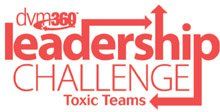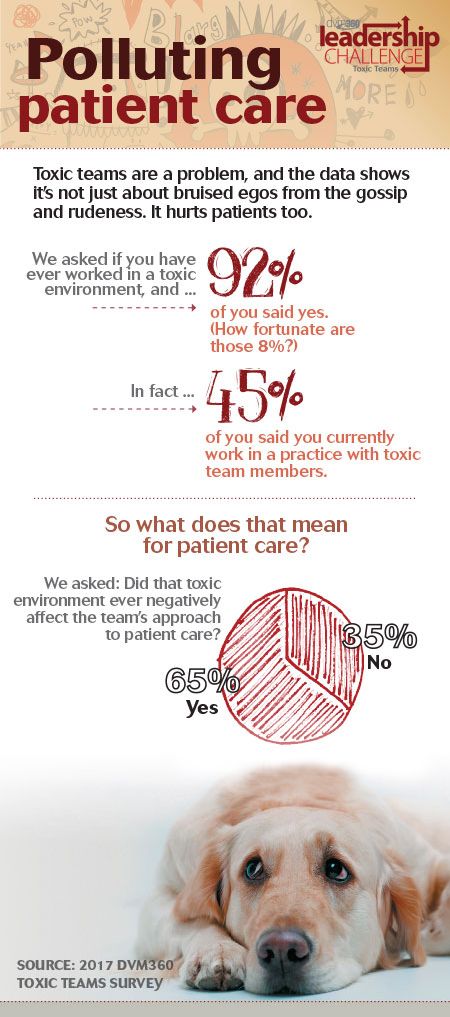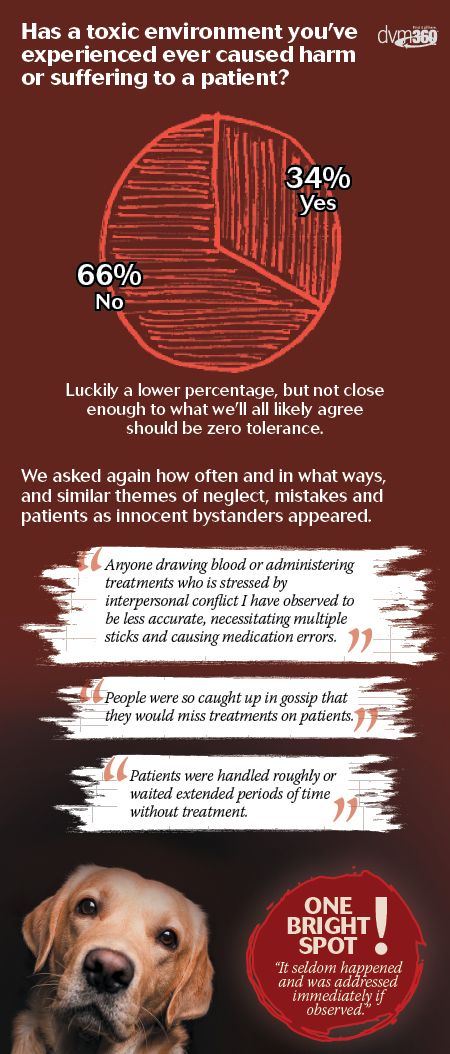Polluting patient care
Toxic veterinary teams are a problem, and the data shows its not just about bruised egos from the gossip and rudeness. It hurts patients too. And the damage caused by one pet's bad experience may never be reversed.

What's all this about? Check out more information on toxic teams here. When it comes down to it, what is most important when working in a veterinary practice? Your patients. Their owners bring them to you for the care they need to grow up happy and healthy. But what happens when you work in a toxic environment? Can you even identify what makes a toxic team? And what would you change if you knew that all the tension, conflict, yelling and anger was actually harming your patients?
But let's get to the real-world experience of it all, via the 2017 dvm360 Toxic Team Survey*.

When we asked how often and in what ways, the frequency varied from rarely to every day(!), and we found some common themes ...
Neglect:"Staff members aren't as focused on clients and patients as they should be because they were worrying about conflicts"
Mistakes: "Missing lab samples, giving incorrect treatments."
Taking frustrations out on the patients: "Saw a dog jabbed with a needle out of a coworker's frustration, when normally the shot would have been given more carefully, calmly and with compassion."
Then we asked some really tough questions, like ... "Has a toxic environment you've experienced ever caused harm or suffering to a patient?"
Click to the next page to see the results.
*The 2017 dvm360 Toxic Teams Survey was sent to subscribers of dvm360, Vetted and Firstline. The survey generated 776 responses, creating a margin of error of about 4 percentage points.
